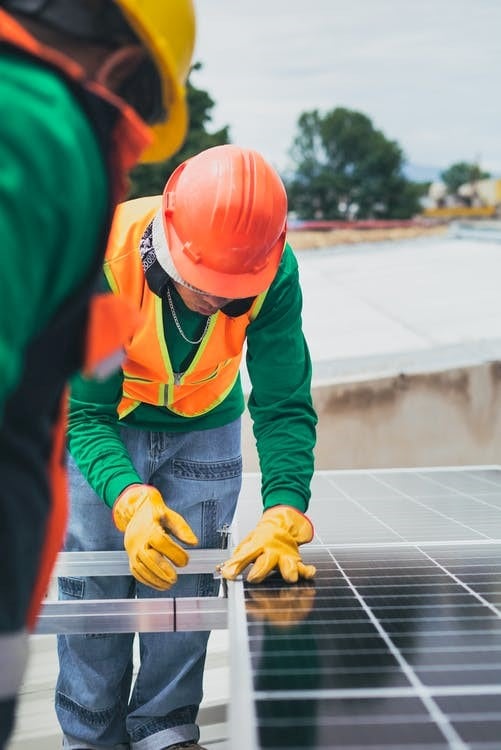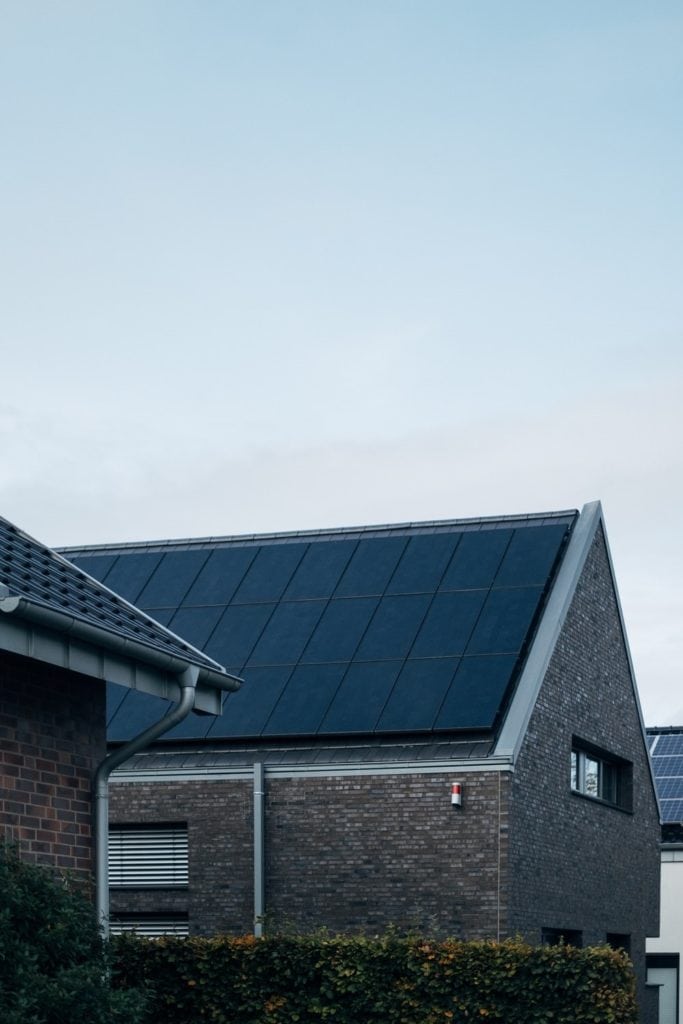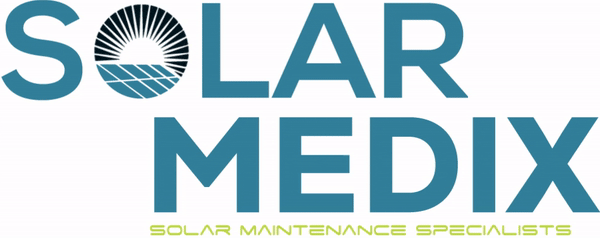Solar energy systems have an industry-standard lifespan of 25 to 30 years. Seeing as how these systems have such a generous lifespan, you may encounter situations when you might have to detach and replace solar panels on your roof so that you can conduct maintenance operations for your roof or equipment in the area. This article will explain how you can successfully detach and replace solar panels as well as when you might find the need to do so.
Reasons Why You Would Need to Detach and Replace Solar Panels

There are several possibilities as to why you might need to detach and replace solar panels. Listed below are some of the most common ones:
Fixing Your Roof
Even modest roof repairs may entail you having to detach and replace some or all of your solar panels. While this may appear to be an inconvenient situation, getting your solar energy system removed makes roof repairs much easier without jeopardizing the safety of your solar panel system.
Additionally, removing your solar panels also clears up quite a bit of space for the roofers to work with, making the process easier and safer for them as well. In fact, some roofing companies won’t even begin repairing your roof unless you have your solar panels detached.
If you ever find yourself in this situation, remember to get an expert solar service to handle the removal and reinstallation of your panels. This is because most roofing companies are unqualified and untrained to handle such a procedure. As a result, it’s preferable to have your solar panels removed by skilled solar professionals that have the necessary knowledge and equipment.
Installing a New Roof
When you’re having your old roof replaced by a new modern one as part of your home remodel, you will need to have your solar panels detached from the old roof and then reinstalled back onto the new one. Unfortunately, there is no easier way around this situation.
Fixing Your Solar Panel System
Although a majority of your solar energy system’s repairs can be performed on the roof, it becomes quite safer to do so once your solar panels have been detached. Regardless of what size and type of solar panels are used, going the extra mile will allow for a more thorough examination of the entire system.
Moreover, certain repairs may even necessitate the removal of solar panels in order to avoid damaging them. For instance, with loose or damaged mounts, you may need to remove the solar panels to make a place for securely reinstalling the mounts.
Repositioning Your System for Optimal Performance
It may come to you as a surprise that the performance of your solar energy system largely depends on the orientation of your panels. The system will only deliver optimal performance when your solar panels are angled a certain way and are facing a certain direction. A lack of expertise or misjudged calculation can lead to your panels being positioned incorrectly, leading to substandard power output.
In case of a large error in the installation, repositioning your system for optimal performance will very likely require you to disassemble and reinstall your solar panels.
Additional Reasons
There might be some other unusual situations that could necessitate you having to detach and replace solar panels. For example, installing or replacing systems that connect to your roof, such as an HVAC system. Furthermore, having your attic repaired or cutting down a tree that extends over your roof and shades your panels are also some scenarios that may qualify for the removal and reinstallation of your solar panels.
An uncommon yet plausible situation is when you’re moving into a new home and wish to take your solar energy system with you. To do this, you will, of course, have to get your system disassembled from the previous home’s roof and installed onto the new home’s roof.
How to Successfully Detach and Replace Solar Panels

The detachment and reinstallation of solar panels is a multistep process. However, once you hire a professional solar service for the job, the rest of the procedure is straightforward. Assuming that the company you’ve hired is competent enough, the entire process should go quite smoothly. Here is a step-by-step description explaining how the process works:
Hiring a Professional Solar Company
Hiring a professional service that is capable of properly planning and executing the detachment and reinstallation of your solar panels is, of course, the first and most important step in the entire process. Disassembling and reinstalling solar panels requires adequate expertise, equipment, and experience.
A solar energy system comprises many complicated and fragile components, including the panels themselves, that can be easily damaged. Additionally, the reinstallation of the system requires the same level of precision, if not more, as the first installation.
Moreover, the direction in which your solar panels face has a significant impact on their performance. Any dimensional and structural changes to your roof during its repairing or replacement could render the previous orientation of your system inadequate for peak performance.
This means that the company you hire should be competent enough to re-determine the position in which your system will deliver optimum performance when reinstalling the system. (Our team at Solar Medix are available for a no obligation consultation. You can contact us at 732-785-4814 or book a consultation online. And we’ll get in touch within 24 hours.)
System and Site Evaluation
Once you have hired a solar company for the job, the step that follows is a system and site evaluation. Your company will schedule an evaluation where they will send a solar expert to analyze the condition of your roof and system. The analysis will help the expert understand your needs and will also help them determine whether or not any particular measures need to be taken for disassembling your system.
Once the technician is done with their evaluation, you will be presented with an estimate for the cost and timeline for your project. This information will help you appropriately schedule the roof work so that the solar and roofing work do not coincide with each other.
Some solar companies even offer you the advantage of managing your solar as well as roofing work for you . These companies have partnering home remodeling firms and therefore are able to easily regulate both sides of the project, ensuring that the workflow is smooth and unobstructed.
Once you are all caught up with the details of your project and approve of them, it’s time to deal with the paperwork where you sign a contract with the solar and roofing company to get your work underway. Thoroughly read the paperwork before you sign it so that you do not end up signing a contract that voids any of your existing contracts or warranties.
Disassembling and Storing the System
In this stage, the solar company you’ve hired will send a team of solar experts to disassemble the solar panels from your roof. After your solar panels, including the mounting hardware, have been detached from the roof, the team of technicians will inspect the quality of your solar equipment and roof. You’ll find out if your mounting hardware or panels need to be replaced or repaired at this stage.
Depending on how good or bad the condition of your roof, solar panels, and mounting hardware is, the solar company might have to revise the timeline, expense, and other terms and conditions of the project that were agreed upon in the prior stage.
For instance, the company might quote a lower net cost for the project in case your system does not require as many repairs as anticipated. On the contrary, the net cost and duration of the project could go up as well if additional repairs are required.
Once your solar panels have been successfully detached, the roofing firm can perform a second inspection of your roof. If they notice something that wasn’t noticed when the panels were still in place, they can recommend updates on the required roof repairs.
Until your roof is fully repaired and ready for the reinstallation of your system, your solar panels will have to be stored in a safe and secure place in order to prevent them from getting damaged or stolen.
Relocating the System
Whether there is a need to relocate your system depends on the specifics of your project and, therefore, will not be mandatory for all cases. However, it can be helpful to understand what is involved in this stage.
When you’re shifting into a new home and wish to bring your solar energy system as well, such a scenario constitutes the need to transport your system to another location. Generally, this project will take longer since additional time is required to transport the system and reinstall it from scratch at an entirely new site.
Additionally, it is important to remember that the prior installation of your system was tailored to the requirements of the previous site. Since your solar energy system needs to be designed and installed in accordance with the particular design and shape of your roof, the reinstallation will almost certainly require new hardware to adjust the system to the new roof.
This is another occasion when continuous communication between your solar panel installer and the roofing company is critical to ensure that everyone is on the same page and coordinated throughout the reinstallation.
Repairing the Solar Panels or Roof
This stage comprises repairing any roofing or solar panel problems that may have been diagnosed in the previous stages. The duration of this process depends on the number and scale of repairs required, the present weather conditions, and the preparedness of the companies in regards to dealing with the issues at hand.
The work required at this stage can include:
- Repair or replacement of your solar panels.
- Repair or replacement of the old roof.
- Replacement of damaged hardware.
Reinstallation and Review
Once your solar panel system and roof have been repaired and are all set for reinstallation, the reinstallation process will commence. In case of minor repairs to the roof, the system may be installed in its previous position. However, if major repairs were made to the roof or it was replaced entirely, the solar experts may suggest updating the orientation of the system in order to meet the requirement for optimal system performance.
After your solar panels have been reinstalled on the roof, the system will be assessed to ensure that everything is properly functioning. It’s critical to ensure that nothing was overlooked during the reinstallation. Among the things that the solar expert will check are your system’s output capacity, whether or not it sends any surplus energy to the battery for storage, and more.
If you’re participating in a net metering program, the solar firm will also consult with your municipal utility to make sure that your system is correctly linked to the power grid.
How Long Does It Take to Detach and Replace Solar Panels?
For an average small-scale residential solar energy system, it normally takes only 1 to 2 days to detach the solar panels and approximately the same amount of time to reinstall them. Of course, you also need to account for the time required to make repairs to the roof and your system in between the detachment and reinstallation.
Needless to say, the duration of repairs varies from one system to another. Therefore, it is difficult to quote a certain value for how long it will take to detach and replace solar panels without evaluating your requirements first. Having said that, in order to get an estimated timeline for the system, you must consult a solar company.
Frequently Asked Questions (FAQs)
How Much Does It Cost to Detach and Replace Solar Panels?
For residential projects, the removal and reinstallation of solar panels cost, on average, $1,500 and $6,000. This does not include the cost of replacing your actual roof.
Can Leased Solar Panels Be Removed and Reinstalled?
Technically speaking, you can remove and reinstall leased solar panels. However, you will first need to consult with the company you’re leasing from. If the company refuses to revise the leasing contract, the only way for you to remove solar panels is by purchasing them.
Where Do I Store My Detached Solar Panels?
It is important that you store your panels in a location where they are safe from getting damaged and from thieves. An ideal place would be a locked garage.
Can I Rearrange My Solar Panels?
Yes you can! However, rearranging your solar panels may lead to decreased performance if wrongly positioned.
What Happens to Solar Panels If I Move?
You can get your solar installation company to relocate your system to your new property.
The team at Solar Medix are ready to answer your questions and give you a no-obligation price quote. Feel free to call us at 732-785-4814 or book a consultation online. And we’ll get in touch within 24 hours.













